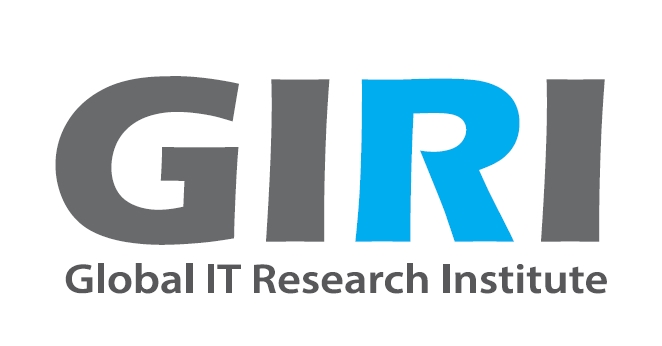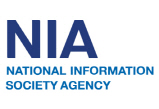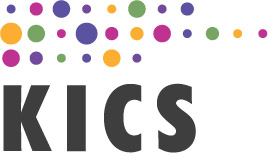Now 56 visitors
Today:287 Yesterday:487
Total: 30652
13S 3P 0R
2025-07-06, Week 28 |
| TACT Journal Page |
| Call for Paper |
| Author Page |
| Paper Procedure |
| Paper Submission |
| Registration |
| Welcome Message |
| Statistics |
| Committee |
| Paper Archives |
| Outstanding Papers |
| Author Page |
| - Paper Procedure |
| - Journal Procedure |
| - Presentation Tips |
|
| Proceedings |
| Program with Papers |
| Plenary Session |
| Tutorial Session |
|
| Presentation Assistant |
| Hotel & Travel Info |
| About Korea |
| Accommodation |
| Transportation |
| VISA |
| Other Infomation |
|
| Photo Gallery |
| FAQ |
| Member Login |
| Scheduler Login |
| Seminar |
| Archives Login |
|
| Sponsors |

|

|

|

|

|

|

|

|

|

|
|
|
|
|
|
2011
 |
Title : Development Strategy for Smart Network in Korea |
|
Time : 17:40 ~ 19:00 Feb. 14 (Monday) Main Ballroom |
|
Speaker : Kwang-Taek Ryu, Ph.D.
Vice President, NIA(National Information Society Agency), Korea
Dr. Kwang-Taek Ryu received the B.E. degree from Inha University, Incheon, Korea, majoring in Industrial Engineering. And he received Ph. D. from Hankuk University of Foreign Studies, Seoul, Korea, majoring in Management Information Systems. In 1995, he joined National Information Society Agency, where he was engaged in the development of network infrastructure of Korea and e-Government. From 1995 to 1999, he served as a director of Industry Informatization Department and Broadband Service Department.
From 2000 to 2001, he was in charge of KII (Korea Information Infrastructure) Department and e-Government Department as a director.
He served as the chair of Technical Committee of IT Application of TTA from 2004 to 2005.
He worked as the director of Information Standardization Department, the director of e-Business Department and the director of Management & Planning Department from 2002 to 2009.
From 2009 to 2010, he was in charge of National IT Project Division as a vice president of NIA. Now, he has served as a vice president of NIA in charge of Digital Infrastructure Division.
His research interest spans over Network Planning and Design, e-Government, Enterprise Architecture, Innovation, and Application Service Provider.
Abstract :
This speech introduces the changing trend of network environment of the world through the cases of Korea, and proposes a strategy for improving network of the future.
The network environment of Korea, the leading country of broadband services, has rapidly changed. The key features of recent changes are summarized as evolution of devices such as smart phones, rapid increase of network traffic, and the change of network market.
Devices are becoming smarter than ever as they are equipped with communication facilities. The network must be smarter in order to keep up with the fore-mentioned change of network environment and the advent of future services.
At the same time, the smarter network is important in order for all the people to use the intelligent services with smart IT technologies in their every-day lives.
This presentation will give the directions for developing and deploying the smart network considering three aspects: ‘ultra-broadband network’, ‘intelligent network’, and ‘open and integrated platform’.
|
 |
Title : The Dawn of Smart Networks |
|
Time : 17:40 ~ 19:00 Feb. 14 (Monday) Main Ballroom |
|
Speaker : C. Randy Giles, Ph.D.
Executive Director and President of Bell Labs Seoul
Member of US National Academy of Engineering
Fellow of the Optical Society of America
Bell Laboratories Fellow
He received BS and MS in Physics from the University of Victoria, Canada, in 1976 and 1978, and PhD in Electrical Engineering from the University of Alberta in 1983.
In 1983 he became a member of Scientific Staff at Bell Northern Research in Ottawa, Canada, in 1986 he joined Bell Laboratories in Holmdel, New Jersey. From 2001 to 2006 he was the director of the Advanced Photonics Research department at Bell Laboratories, from 2006 to 2009 he was the director of the Optical Subsystems and Advanced Photonics department.
His technical contributions include the first use of erbium-doped fiber amplifiers in optical data transmission and the development of practical erbium amplifier models. He also expanded the applications of fiber-Bragg gratings, including their use in wavelength-stabilized 980-nm pump lasers and fiber-Bragg grating wavelength add/drop multiplexers. He developed micromechanical optical devices, most notably a large-scale optical crossconnect.
He was awarded the Discover Award in Communications in 2000 as inventor of the micromachine-based LambdaRouter, his R&D team received the Bell Labs Presidents Gold Award in 2001, awarded the 2001 Bell Labs Fellow for sustained scientific contribution and received the 2004 Fraunhofer Award/Burley Prize from the OSA for his seminal contributions in optical communications technology. In 2008 He was honored as Laureate of the Millennium Technology Prize from the Finnish Government and he is the recipient of the 2010 John Tyndall Award from the OSA and the IEEE Photonics Society for his role in the development of optical communications. He was elected to member of the US National Academy of Engineering in 2010.
Abstract :
Online Definitions:
Smart:
o Showing mental alertness and calculation and resourcefulness (Wordnetweb).
o Capable of independent and apparently intelligent action (Wordnetweb).
Intelligent Network:
o An Intelligent Network] allows operators to differentiate themselves by providing value-added services in addition to the standard telecom services (Wikipedia)
o A network that allows the fast and flexible introduction of new services and customisation capabilities for users of that network. (kcomplc.com)
Yesterdays networks simply transported and routed bits among clients, whether they were man or machine. In sharp contrast, todays smart networks incorporate powerful computational and storage datacenters to support new services with ubiquitous access through mobile multimedia platforms.
Yet the synthesis and instantiation of new services that use the network intelligence, cloud resources, and target smart terminal devices remains slow and difficult. Windows Azure (Microsoft), Cloudstart (HP), IBM Cloud (IBM), are examples of cloud-based operating systems and tools that are emerging to simplify the otherwise complex tasks of integrating the end-to-end function of new cloud-based services. Equally important though, the rapid deployment of custom services and applications requires access to functions at the network element level using Application Programming Interfaces (APIs) in what is termed Applications Enablement. This talk will consider the societal, economic and business forces that are driving the emergence of the Smart Network and the implications of Applications Enablement to equipment vendors, network operators, service providers and end users.
|
|
|
|
|
ⓒ Copyright 1999. ICACT (ISSN 1738-9445) & Global IT Research Institute(GiRI) All rights Reserved. Contact: office (at) icact . org Tel:+82-70-4146-4991
|
1713 Obelisk, 216 Seohyunno, Bundang-gu, Sungnam Kyunggi-do, Republic of Korea 13591
Business License Number : 220-82-07506, President: Thomas ByeongNam Yoon Ph.D. |
|
(13591)경기도 성남시 분당구 서현로 216 오벨리스크 1713호
(사)글로벌IT연구회 사업자등록번호 : 220-82-07506 대표자 : 윤병남
|
|
| |






